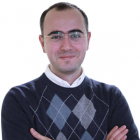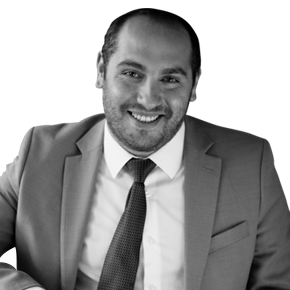In Yerevan, a regular pan-Armenian forum was held, which is actively discussed in the expert community and general public. Some believe that such events are important since representatives of Armenia and Diaspora have an opportunity to discuss the pressing issues of the Armenian world. Others actively criticize the pan-Armenian meeting due to the lack of concrete and practical results. The third group is just satisfied with the idea that some well-known politicians, economists, businesspeople, athletes and artists of Armenian origin from all over the world participate in this forum. It is pointless to make any attempts to say who is right and who is wrong since each side is armed with itsown arguments. Within the framework of this article, I would like to consider one of the formulas for solving an important problem - the transformation of a community into a diaspora.
The main difficulty is the misunderstanding of such phenomena as community, diaspora and lobby. We are used to mixing all these concepts. However, each of these institutions is unique and has peculiar characteristics. A community implies a specific ethnic group living outside the country of origin. As a rule, representatives of a community are united by linguistic, cultural, traditional and religious elements. Lobbyism is an organizational model which allows various interest groups to promote their interests. Diaspora is a more complex institution. Alexander de Conde, one of the leading researchers of diaspora and lobbyism notions, believes that diaspora is the highest stage of an ethnic group's development. The group brings its "historical memory" to the forefront and builds a unified political institution around that notion.
Realizing the actual differences, we have to state that the Armenian world remains in the "community" mode. It is necessary to solve a number of important tasks to move to the stage of the political diaspora. The first one is to develop electoral mechanisms at the level of individual communities to create legal institutions. Thus, communities in Los Angeles, San Francisco, Glendale and Fresno form electronic lists of Armenian voters in their cities. These people will participate in the elections. Every ethnic Armenian that wants to become a potential voter provides data for registration and makes an electoral contribution. The need for such payment is due to a number of reasons. Firstly, only those who are motivated and conscious enough can take part in the elections. They should reinforce their intentions with financial support. Secondly, the central election headquarters' budget will be formed due to these contributions.
The Central Headquarters (CH) establishes regulations (including limits and categories for candidates), taking into account the quantitative and qualitative characteristics of the territorial unit and community. Candidates devise their programs, form their headquarters and conduct election campaigns. As a result, the race winner becomes a legitimate representative of the Armenian community of Los Angeles in the, let's say, "Council of Armenian Communities of California". The elections in other communities are held in a similar way throughout the country. The next step is the formation of the Alliance of Armenian Communities of America (AACA). Organizations in the states, created at the first level, send one candidate to the AACA. At the same time, each state-level structure makes an annual contribution that forms the budget of the pan-Armenian community institute of America.
At the last level, AACA determines its delegate to the, let's say, "International Armenian Assembly" (IAA), the main body of the constructed diaspora, which will include the legitimately elected figures who speak on behalf of hundreds of thousands of ethnic Armenians. To prevent the authoritarian rule, there should be a strict restriction on the presence of every delegate in the organization: one term for four years without any rights to return. Financing rules should also be tight enough. A single contribution should be established for all country organizations, regardless of the size of the country and the size of the community. Such a system will minimize the risk of a particular community's dominance. The structure, goals and objectives of the IAA are determined by the organization's board with the direct participation of the Republic of Armenia.
Such a body is not a whim, but the demand of time. The current leaders of community structures around the world do not represent the interests of the majority. However, the most dangerous thing is that they do not have strategic planning. In fact, most of the organizations worldwide spend the inheritance received from the founders of the first large structures. In pursuit of illusive goals, the "elite" failed to understand the historical value of the Armenian statehood and forgot about the need to educate a new generation of leaders, politicians, economists and lobbyists. In other words, intellectual potential has been neglected and is unlikely to work for the benefit of the Armenian world in the future. In such realities, it makes no sense to talk about solving global problems. Today it is necessary to start doing what had to be done yesterday.
Areg Galstyan - PhD, regular contributor to The National Interest, Forbes, The Hill and The American Thinker.
These views are his own.
















Comments
Dear visitors, You can place your opinion on the material using your Facebook account. Please, be polite and follow our simple rules: you are not allowed to make off - topic comments, place advertisements, use abusive and filthy language. The editorial staff reserves the right to moderate and delete comments in case of breach of the rules.